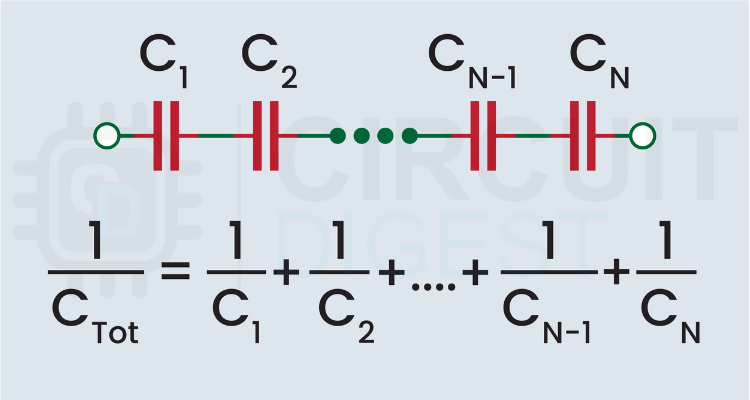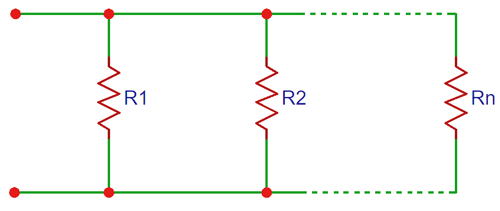The Capacitor in Parallel Calculator is designed to determine the total capacitance when multiple capacitors are connected in parallel within an electronic circuit. Understanding the principles of calculating capacitance in parallel is fundamental for circuit designers, as parallel capacitor configurations follow distinctly different mathematical relationships compared to series arrangements. When capacitors are connected in parallel, the capacitance formula in parallel demonstrates that the total capacitance equals the sum of individual capacitances:
CTotal=C1+C2+...+Cn
where CTotal represents the total capacitance, and C1, C2, ..., Cn are the individual capacitances measured in farads (F).

In parallel capacitor circuits, the total capacitance is always greater than the largest individual capacitor value. When capacitors are connected in parallel, they all experience the same voltage across their terminals, but the current divides among them based on their capacitance values. The capacitor formula in parallel reflects this behaviour because each capacitor contributes its full capacitance to the total circuit capacity. Since Q = CV and voltage remains constant across parallel branches, the total charge storage capability increases proportionally with each added capacitor.
Example of Calculating Capacitance in Parallel
Calculating the total capacitance of three capacitors connected in parallel: 10 µF, 22 µF, and 47 µF.
Solution:
C_total = C₁ + C₂ + C₃
C_total = 10 µF + 22 µF + 47 µF
C_total = 79 µF
We have also worked on other projects involving parallel capacitor connections, connecting Li-Ion cells in parallel.
Commonly Asked Questions
⇥ Why do capacitors in parallel add up?
When capacitors are in parallel, they share the same voltage but can each store charge independently. It's like having multiple storage tanks side by side - the total storage capacity is the sum of all tanks.
⇥ What's the advantage of using parallel capacitors?
Parallel capacitors provide:
- Increased total capacitance
- Better ripple reduction in power supplies
- Distributed ESR (Equivalent Series Resistance)
- Flexibility in achieving non-standard values
⇥ How does voltage rating work for parallel capacitors?
All capacitors in parallel experience the same voltage. The voltage rating of the combination is the lowest voltage rating among all capacitors. Never exceed the lowest-rated capacitor's voltage limit.
⇥ What about tolerance in parallel combinations?
Tolerances don't simply add. For capacitors with the same tolerance percentage, the combined tolerance remains approximately the same. For different tolerances, the result tends toward the tighter tolerance due to averaging effects.
⇥ Do parallel capacitors affect the frequency response?
Yes. Each capacitor has its self-resonant frequency. Using different values in parallel can extend the effective frequency range, which is why you often see multiple capacitor values in parallel for decoupling applications.
Complementary Tools for Accurate Circuit Calculations
Take your circuit design further with these useful calculators for key components that shape current and voltage behavior.
Capacitor in Series Calculator
The Series Capacitor Calculator is designed to simplify the process of evaluating the total capacitance when multiple capacitors are connected in series within an electronic circuit.
Resistors in Series Calculator
This series resistor calculator calculates the total resistance value for all the resistors connected in series.
Resistors in Parallel Calculator
This parallel resistance calculator calculates the total resistance value for all the resistors connected in parallel.




